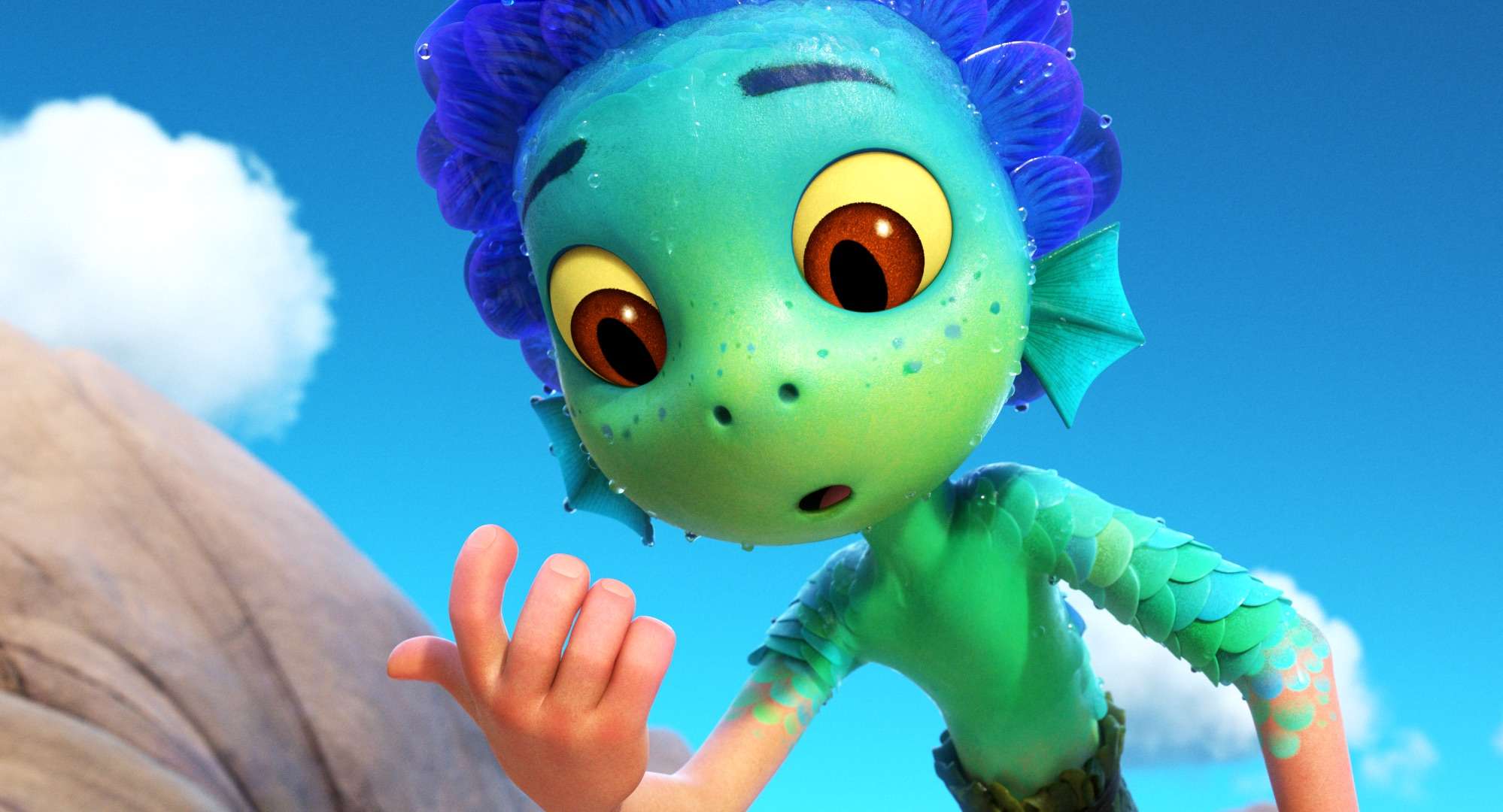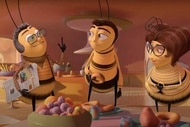Create a free profile to get unlimited access to exclusive videos, sweepstakes, and more!
How 'Luca' once again challenged Pixar to delve into the worlds of monsters and humans

Pixar is no stranger to monsters, having subverted the childhood fear of "there's something in my closet" with 2003's Monsters, Inc. The Disney-owned animation studio once again taps into that vein with Luca, a film about two young sea monsters trying to assimilate into a seaside town on the Italian Riviera, while attempting to avoid detection by the fearful humans that live there. It is literally a fish-out-of-water story inspired by director Enrico Casarosa's childhood and love of Italian culture, circa the 1950s and '60s.
During a virtual press event for the movie back in March, production designer Daniela Strijleva explained how the story is split between two different worlds: the monster world and the human world. “In contrast with the human world, which is really warm and sunny, the sea monster is more like the deep blues and greens of the Mediterranean," she explained. "So, life under here is quiet, the visual language is very organic… there are no straight lines and everything is moving."
While the human characters were given clothes with "a warm color palette to feel nostalgic, almost like it comes out of a memory," they were also designed to feel intimidating for the two main protagonists: Luca (Room's Jacob Tremblay) and Alberto (Shazam!'s Jack Dylan Grazer), who resemble normal boys when they're out of the water. "Notice how huge Massimo is," Strijleva added, referring to the hulking fisherman father of Giulia (Emma Berman), a young girl who befriends the pair. "That was an intentional choice, not only for caricature, but also to emphasize the stakes for the boys."
When it came to the monster designs, the production looked to the Carta marina (a 14th-century map of the Scandinavian peninsula) for inspiration. Even those with a passing knowledge of cartography are aware of the fact that ancient maps of the ocean were filled with larger-than-life illustrations of bizarre and terrifying creatures of the deep. "Some design details that carried through to the final film are things like the shapes of the fins of the sea monsters — how decorative their scales are, and the curves of their tails," Strijleva said. "We did want our sea monsters to look like real fish."
But even with that general creative cue, the animators wanted there to be noticeable diversity among the water-dwelling denizens. For instance, Luca's overprotective mother, Daniela (Saturday Night Live's Maya Rudolph) was given "the longest tail because we really wanted her to feel impressive [as] the matriarch of the family," the production designer explained. Luca's build, on the other hand, "is gentler, rounder — he’s all about flow. Luca has the biggest eyes of the entire cast of characters because he’s curious and has a big imagination and he takes in the world through his big, expressive eyes."
Light and color were also important factors in Luca's journey as he defies his parents to explore the surface world and all the pleasures it has to offer — from gelato to Vespas. "We want you to feel the way that Luca feels, so we take something that’s internal, which is the emotions of the characters, and express it externally [and] visually, through color and light," Strijleva said. "You can feel Luca’s loneliness or his excitement or his fears or his hopes and dreams. And, more than anything, the joys of childhood, freedom, and his friendship with Alberto."
Despite the film's constant use of the term "monster," Casarosa never thought of Luca and his kin as particularly frightening. "It's just not my sensibility, to be honest, to go to something truly, truly scary. Or draw something slimy. " the director said during a Q&A segment following the presentation. "I think it's a bit of a preference, and I thought that it could still be fantastical, but appealing."
The only character who could be considered "scary" in the traditional is Luca's Uncle Ugo, an eccentric inhabitant of the ocean's darker depths, whose lack of exposure to light has caused him to evolve into a translucent angler fish-type creature. Though, to be fair, he is one of the funnier and more memorable creations to come out of the wildly inventive Pixar machine. When Luca starts leaving the safety of the sea, his parents (his dad, Lorenzo, is voiced by Troop Zero's Jim Gaffigan) attempt to persuade him to send him away with Ugo. "[He's] the one that we wanted to make as scary as possible to make it as dreadful as possible for Luca to have to go with him," Casarosa said.
The point is that Luca is less about scares and more about themes of stereotyping and acceptance. "Both sides kind of refer to the other as 'monsters,'" producer Andrea Warren added. "You know, the humans say they're sea monsters, and the sea creatures say, 'You know, they're land monsters.' And I think that is a part of the theme of the film. Which is that they really aren't monsters. Neither one of them are. And if they get to know each other more, and appreciate each other for what they are and what they can learn from each other, they'll discover they aren't monsters. I think that was also part of them not looking like monsters is that, ultimately, we didn't want that to be true of either side."
"We hope that sea monster could be a metaphor for all sorts of feeling different — like being a teen or pre-teen," Casarosa concluded. "That moment where you feel odd. There are all sorts of ways of feeling different. It felt like a wonderful way to talk about that and having to accept ourselves first, whatever way we feel different."
Luca takes its first sodden steps onto dry land — and Disney+ — on Friday, June 18.














